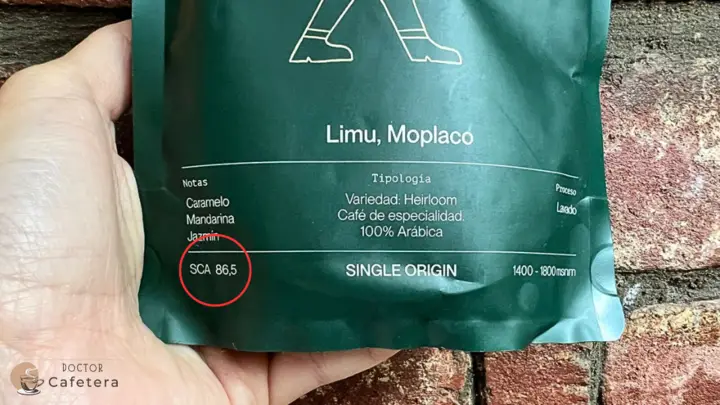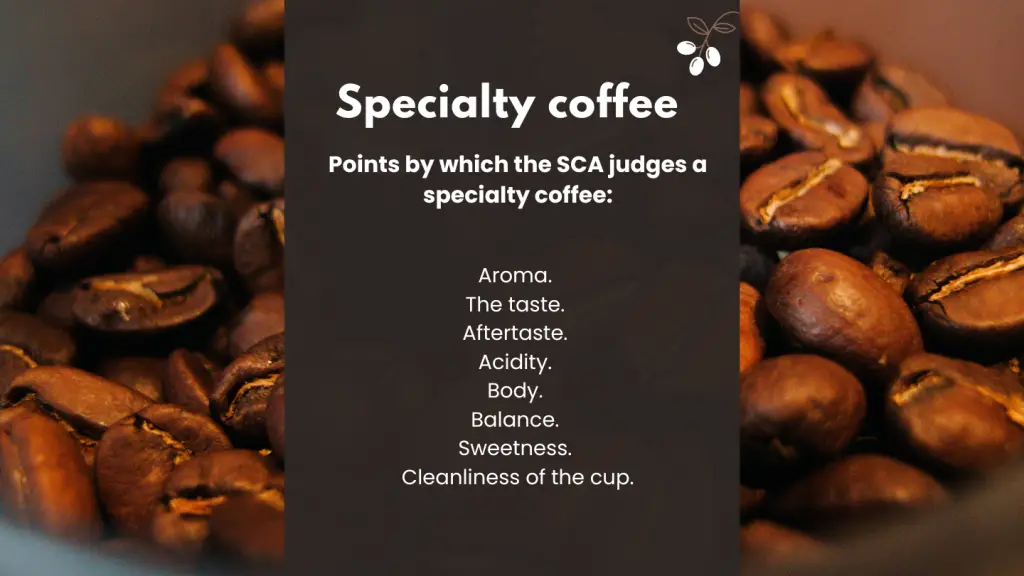Unlike conventional commercial varieties, specialty coffee represents a higher standard in terms of quality, cultivated under specific conditions and subjected to more precise production processes.
What makes specialty coffee special?
From my point of view, the distinction of a coffee as truly “specialty coffee” resides in its capacity to fulfill each of the following ten fundamental points:
- Focus on quality: Specialty coffee beans are grown and processed with an exceptional commitment to quality and excellence in taste.
- Specific geographic origin: These beans come from particular geographical regions, contributing to their uniqueness and variety of flavors.
- Cultivated under favorable conditions: They are grown in specific environments that offer optimal conditions for their growth, influencing their flavor and final quality.
- Careful harvesting: The beans are harvested meticulously, selecting only ripe beans to ensure maximum quality.
- Detailed processing: Beans undergo meticulous production processes, such as washed, natural, or honey, influencing their flavor characteristics.
- Specialized evaluation: The quality of specialty coffee is assessed through rigorous tastings, where aspects like aroma, taste, body, and acidity are analyzed.
- Rigorous scoring: Beans must reach a minimum score threshold, usually around 80 out of 100 (SCA rating), to be considered specialty coffee.
- Focus on sustainable practices: These beans originate where sustainable and ethical agricultural practices are prioritized.
- Highlighting regional characteristics: The specialty coffee category seeks to highlight and celebrate the unique characteristics of each producing region.
- Complex sensory experience: The focus on quality and distinctive characteristics of specialty coffee offers a deeper and more enriching sensory experience for coffee enthusiasts.
Each element defines the path to excellence in coffee, differentiating between a common cup and an exceptional sensory experience.
The role of SCA in specialty coffee
The Specialty Coffee Association (SCA) sets rigorous quality standards for specialty coffee at all supply chain stages, from production to service in the cup.
These standards encompass cultivation, harvesting, processing, roasting, preparation, and coffee tasting. The SCA ensures that specialty coffee meets these standards to guarantee an exceptional experience for consumers.
The SCA uses a scoring system and standards to determine if coffee is considered a “specialty.” These standards focus on various aspects of coffee, from production to tasting.
Cupping score
The cupping score is a subjective evaluation of coffee’s taste, aroma, acidity, body, and other sensory attributes. The SCA sets a minimum score threshold (usually 80 out of 100) to consider coffee as specialty. The higher the score, the higher the perceived quality of the coffee.
Category 1 of defects
These are severe defects that generally indicate a significant problem with the quality of the coffee beans, and SCA demands their absence:
- Black beans: Beans darkened due to abnormal fermentation.
- Fermented beans: Beans with unpleasant odors and flavors due to fermentation.
- Dry cherry: An underdeveloped coffee cherry that dried on the tree.
- Fungi: The presence of fungi that can alter the taste and safety of the coffee.
- Foreign matter: Any foreign object not part of the coffee bean, such as stones or dirt.
- Beans with severe defects can include beans with significant damage, such as holes.
Category 2 of defects
These are less severe defects that generally do not indicate such serious problems with the quality of the coffee. SCA allows a maximum of 5 defects of this category in a sample:
- Broken coffee beans
- Immature beans
- Wrinkled beans
- Floating beans
- Beans with husks, parchment, shell, or pulp
- Crystallized beans
- Discolored beans
- Flat or spongy beans
What is the specialty coffee production process?
The specialty coffee production process involves several key stages to maximize coffee’s quality and unique characteristics. Here’s an overview of this process:
- Variety and Region Selection: Coffee growers carefully choose coffee varieties and geographic regions for cultivation. Some varieties and terroirs are known for producing distinct flavors.
- Cultivation and Selective Harvesting: Careful cultivation is practiced, often following sustainable agricultural practices. Selective harvesting is performed, collecting only ripe beans to ensure maximum quality.
- Processing: Harvested beans undergo various processing methods, such as washed, natural, or honey. Each method can affect the final flavor and characteristics of the coffee.
- Drying: Processed beans are carefully dried to reduce moisture to the appropriate level and prevent flavor defects.
- Depulping: During this stage, the outer layers of the bean are removed to expose the green coffee inside. This can be done by machines or manually.
- Sorting and Cupping: Beans are sorted and subjected to cupping, in which experts evaluate aspects like aroma, flavor, acidity, body, and balance. Beans meeting established quality standards are considered specialty coffee.
- Roasting: Selected beans are precisely roasted to highlight their unique flavors and aromas. Roasting is an art itself and can significantly influence the final flavor profile.
- Packaging and Transport: Proper packaging is essential to preserve the freshness and quality of coffee during transportation and storage. Packaging with a one-way valve protects against light, air, and moisture to safeguard coffee flavors and aromas.
The specialty coffee process extends from meticulous variety and region selection to a series of carefully designed stages to enhance the quality, flavors, and unique characteristics that define specialty coffee.
Evolution of specialty coffee worldwide
The evolution of specialty coffee has been remarkable in the coffee industry over the past decades. It has shifted from a relatively small niche to a global trend, transforming how coffee is grown, processed, prepared, and enjoyed worldwide. Here’s a summary of each key aspect of this evolution:
Origins and recognition
By the late 20th century, the first signs of increased appreciation for coffee quality emerged. Coffee growers and roasters started paying more attention to the beans’ origin, variety, and production process. This gradually led to the recognition that certain beans and regions could produce exceptional flavors and aromas.
Formation of organizations
The establishment of the Specialty Coffee Association (SCA) in 1982 was a significant milestone in the specialty coffee movement. SCA set quality standards, promoted education and training, and helped spread interest in high-quality coffee worldwide.
Focus on sustainability
As interest in specialty coffee grew, so did awareness about the importance of sustainable practices in coffee production. Consumers and producers began to value responsible farming and fair trade.
Rise of artisanal roasting
Throughout the 1990s and 2000s, numerous artisanal roasters emerged worldwide, allowing roasters to experiment with unique roasting profiles and highlight individual bean characteristics.
Focus on cupping and education
Cupping became an essential tool for evaluating and comparing coffee flavor profiles. Cupping training and education became more accessible, enabling more people to appreciate and better understand the complexity of coffee.
Third wave movement
“The third Wave of coffee“, which emerged in the 2000s, emphasized coffee origin and process even more. Baristas became experts in preparation and presentation, and consumers began considering specialty coffee an artisanal experience similar to wine.
Diversification of origins and profiles
New producing regions with unique characteristics and flavors were discovered and promoted as demand for specialty coffee grew. Consumers began to explore a wider variety of origins and flavor profiles.
Direct trade coffee
The direct connection between producers and consumers was strengthened with the emergence of direct trade models and long-term relationships, allowing for greater transparency and better conditions for coffee growers.


